The theme of space has been a source of inspiration for architects from all over the world for more than a decade.
They develop new futuristic projects of walking-flying cities, mobile housing and cocoon buildings made of elastic synthetic materials with enviable frequency. Unfortunately, many grandiose buildings often remain on paper, but "simpler" ideas can be implemented.
Here you can see buildings that look like starships, satellites, alien ships than stationary architectural structures designed for quite earthly purposes.
So, the TOP 10 most cosmic buildings in the world:
Ryugyong Hotel in Pyongyang (North Korea)

The impressive 105-story hotel is the tallest building in North Korea, which could become one of the modern symbols of the country. They started to build the high-rise in 1987, but the economic crisis of the early 90s prevented the construction. In 2008, the North Korean government announced its intention to finish the project. An Egyptian company completed the surreal symbol of communism and the exorbitant ambitions of the government, but so far the hotel has not been put into operation.
Italian architect Stefano Boeri called the hotel Rugen the only piece of science fiction in the modern world. The power and grandeur of the building certainly amaze the imagination. It is possible that North Korea will still become more open to tourists and the hotel will finally be able to receive the first guests, and the guests will see firsthand the grandiosity of the architects' plan.
TV Tower, hotel and restaurant Ještěd in Liberec (Czech Republic)
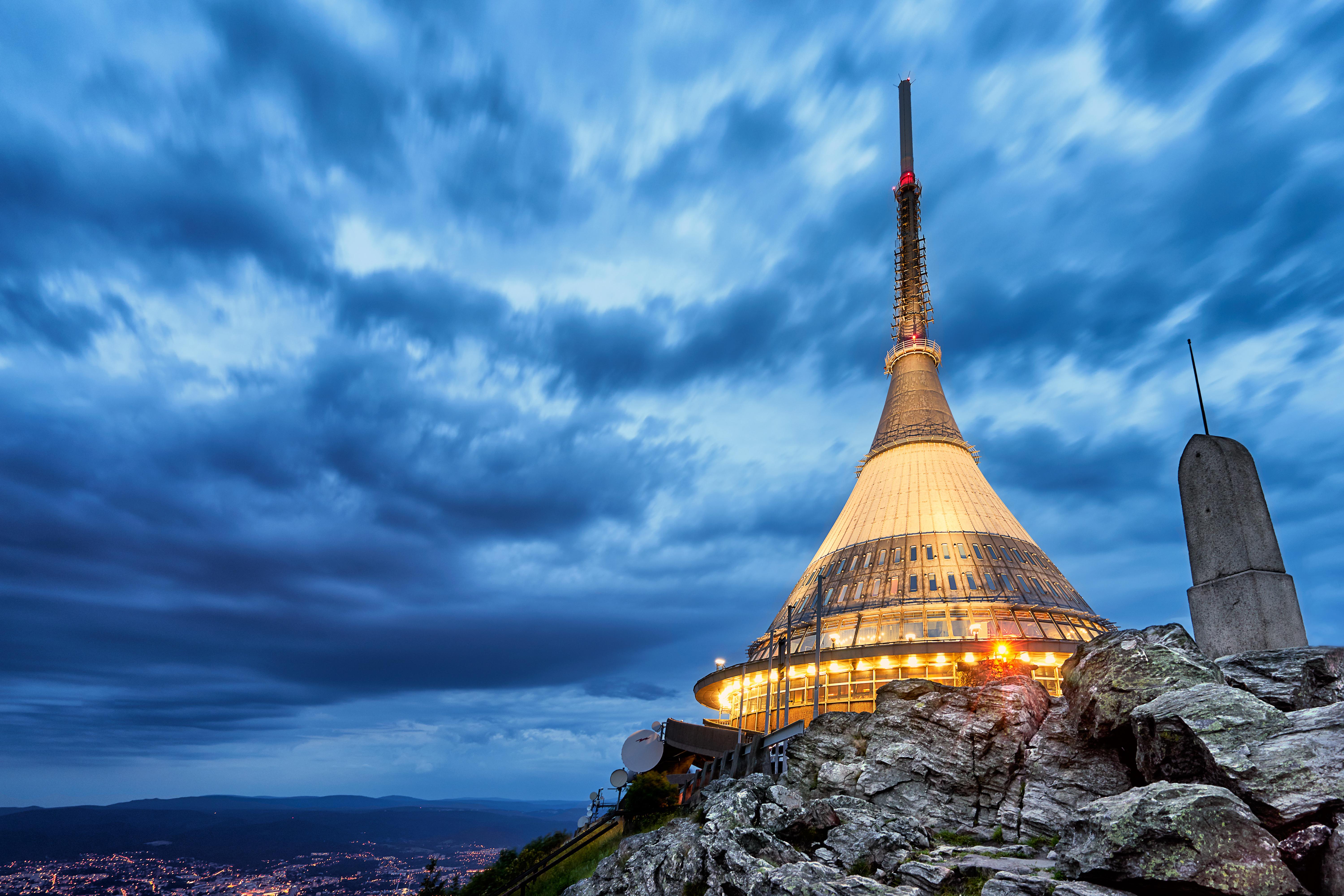
Ještěd, the hotel and the panoramic restaurant is located in the building of the TV tower, located on the top of the mountain of the same name in the Czech city of Liberec. The tower is not only an interesting attraction, but also the main symbol of the city. The 94-meter-high building was designed by Karel Hubáček and has a very futuristic look.
The construction of the hyperboloid structure took place from 1963 to 1973, during the craze for space all over the world, which undoubtedly reflected on such an original image of the tower.
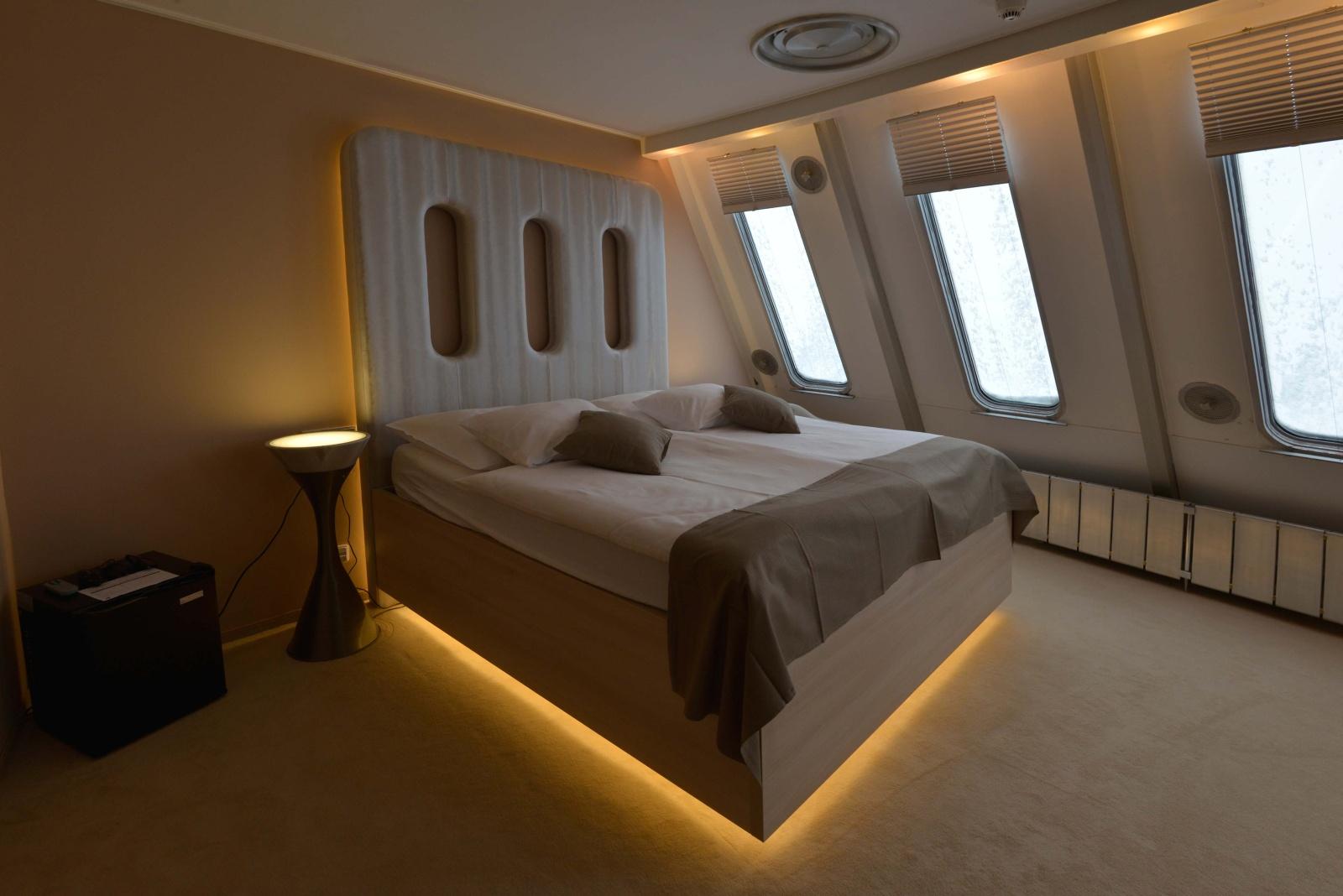
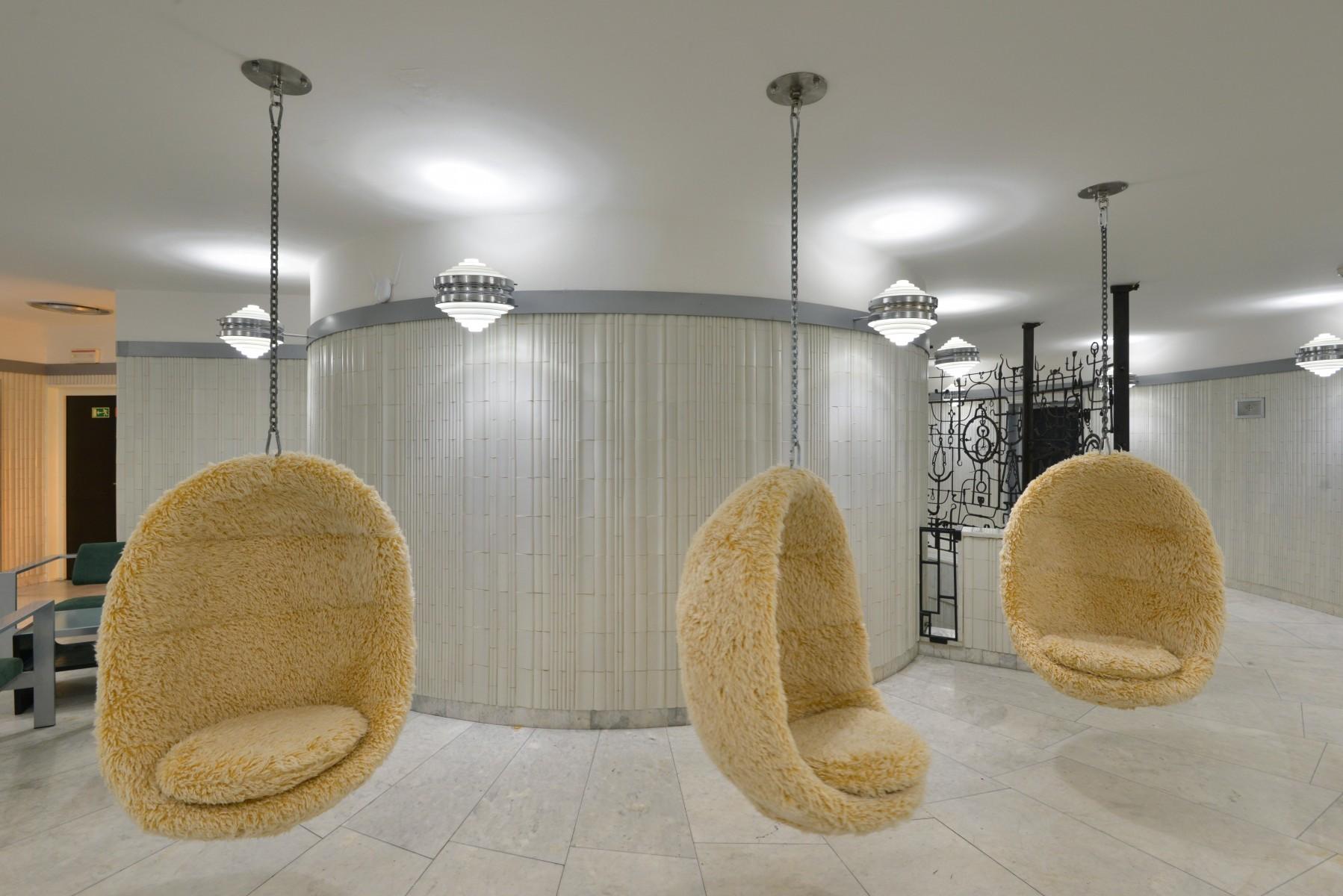
The hotel and restaurant, which are located on the lower floors of the building, offer a wonderful panorama of Czech Bohemia, Poland and Germany. The interior deserves special attention, which continues the "cosmic" theme of the exterior of the TV tower. Upholstered armchairs hanging from the ceilings, porthole windows and futuristic lamps immerse guests in Kubrick's "Space Odyssey".
Hallgrímskirkja Lutheran Church in Reykjavík (Iceland)

The church, which took 38 years to build (1945 - 1986), is located in the very center of Reykjavík. It is rightfully considered the main attraction of the city. When designing this unusual religious building, architect Guðjón Samúelsson was inspired by the fascinating volcanoes of Iceland.
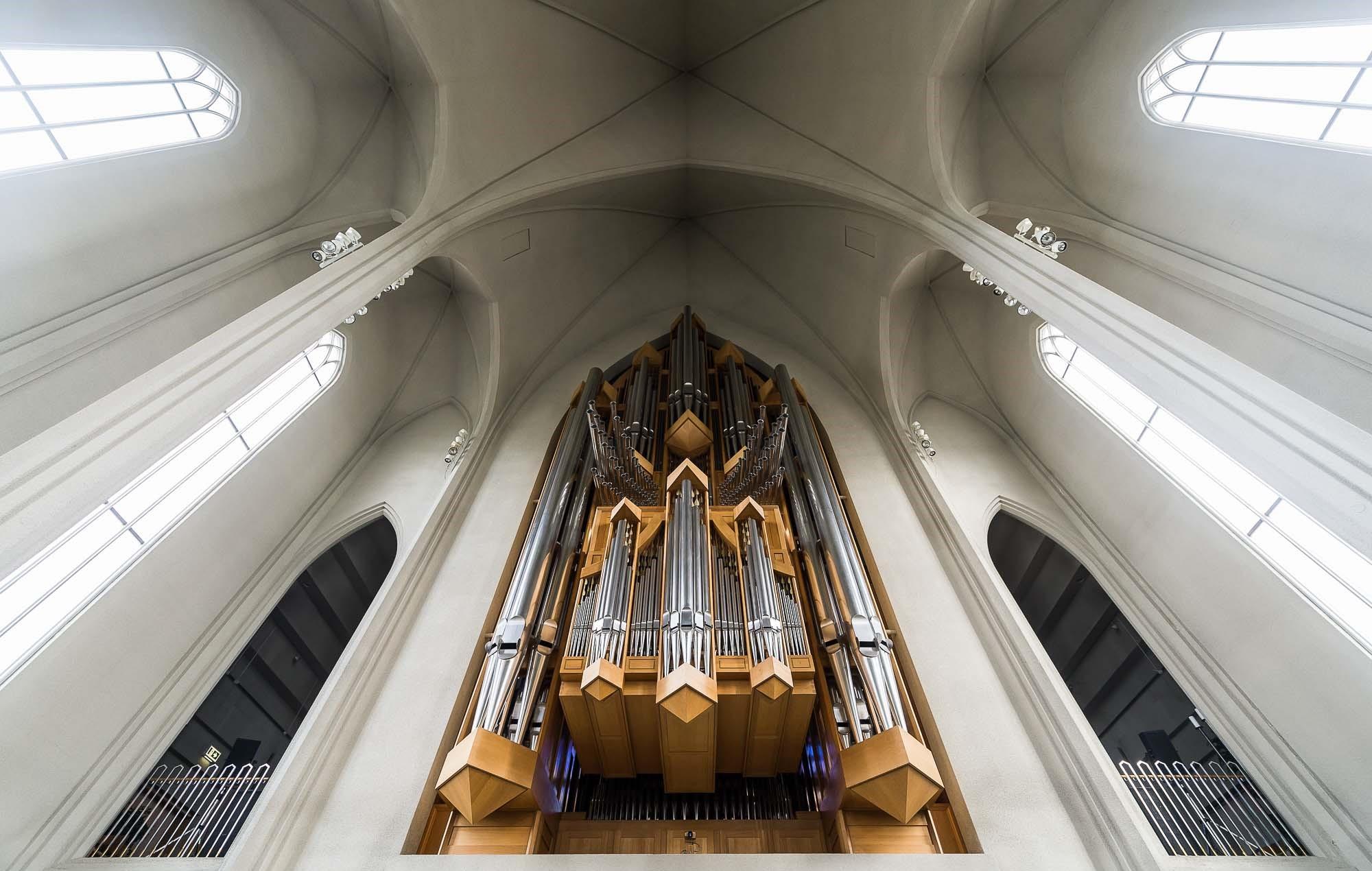
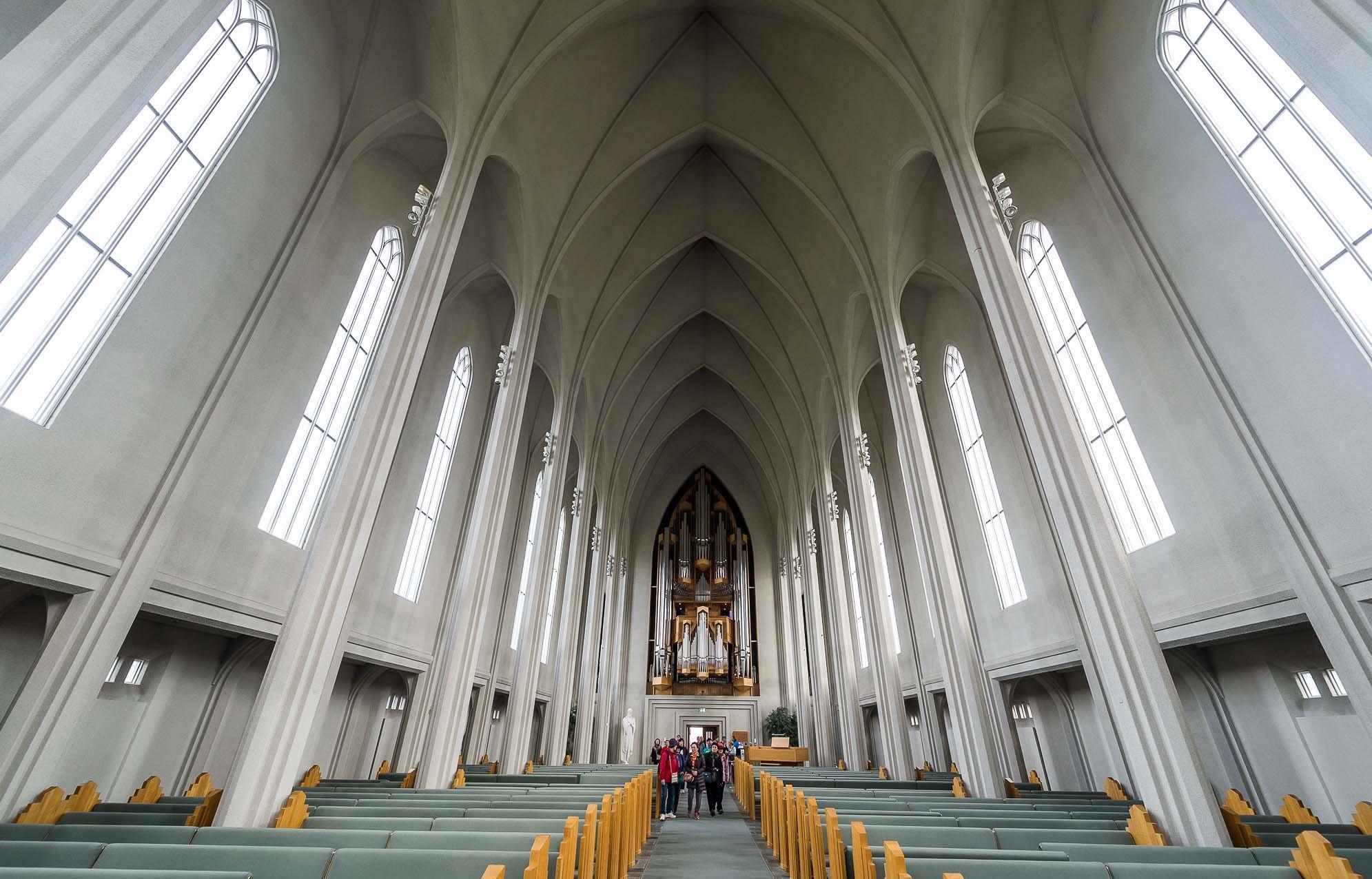
However, one silhouette of the temple resembles a tower from Tolkien's works, or a giant stalagmite, while others see it as an intergalactic ship. In any case, this grandiose building is a real magnet for residents and tourists. The 75-meter bell tower of the building is visible from anywhere in the city. The tower of the church is also an observation deck from where you can enjoy the beauty of Reykjavik from a bird's-eye view. Hatlgrimskirkja Church is named after the Icelandic poet and spiritual leader Hallgrímur Pétursson, who is the author of the book "Passion Hymns".
Monument house in Buzludzha (Bulgaria)

The idea to build this object appeared long before its implementation in the form of a flying saucer. The project of architect Georgi Stoilov won the competition in 1964 and bore little resemblance to the version in which it was embodied as a result. Initially, it was an ellipse mounted on six columns, and in its center there was to be a pylon, on top of which there was a five-pointed star. However, the construction was postponed, and they returned to it only in 1970.
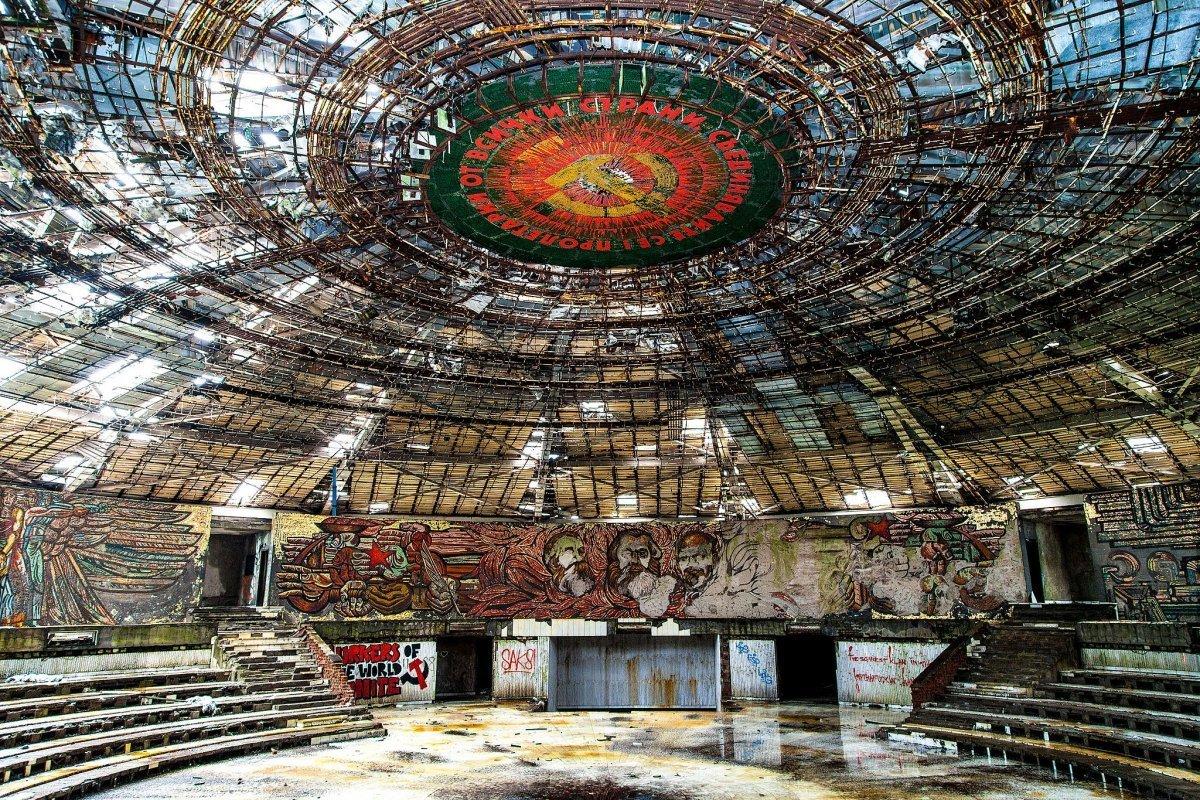

According to the "cosmic" trends of that time, Stoilov finalized the project, turning the monument into an alien ship. The memorial was inaugurated in 1981 and all communist celebrations took place in Buzludzha before the fall of communism. Here they were accepted as pioneers, celebrated the arrival of communists to power and so on. Then the monument fell into disrepair, all the property was looted, vandals did a good job on the appearance. In 2016, the Bulgarian authorities announced the restoration of the monument house and its transformation into a museum in the future.
The building of the State Circus in Kazan (Tatarstan, Russia)
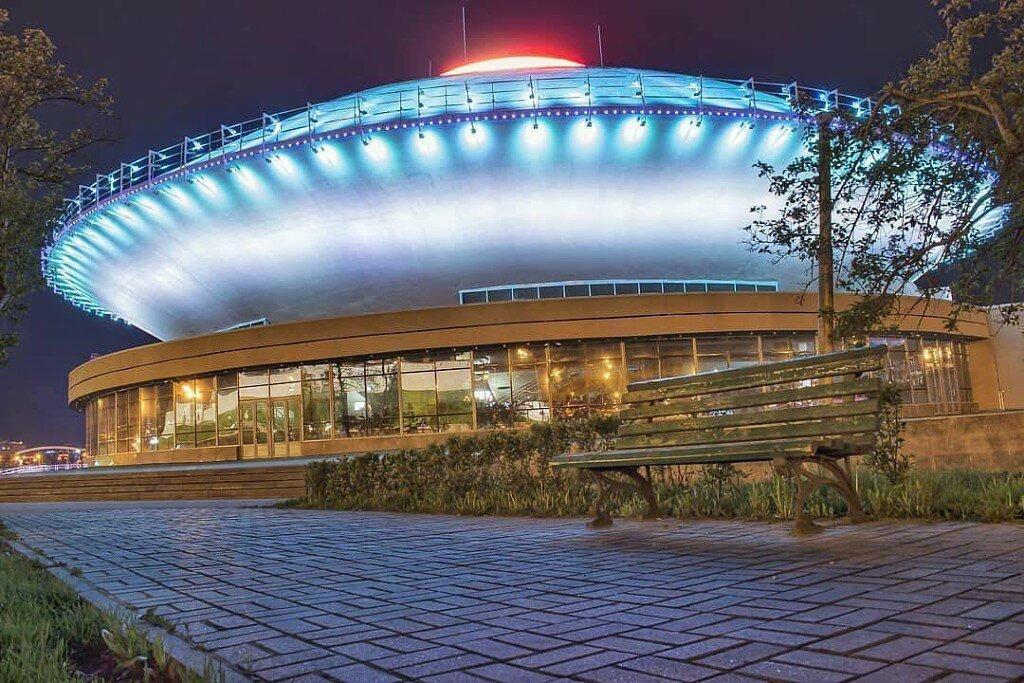
Another flying saucer "landed" in the capital of Tatarstan, on the banks of the Kazanka River, in 1967. The building of the State Circus is one of the most important sights of the city, recognized as an architectural monument. By the way, the domed roof of the circus was not made as such in order to provide a resemblance to a flying machine – at that time in the USSR, this theme had not yet entered architectural fashion. According to the architectural group, this shape had to fit into the local landscape, as it resembled a hill, but after the completion of construction, the building was not called anything else than a "plate".
The design of the circus had no equal not only in the Soviet Union, but also in the world. This is the first monolithic concrete structure in the USSR. The main feature of the object is that the giant concrete dome with a diameter of 62 meters does not have a single internal support! At that time, the world architectural community did not know such solutions yet. Due to the lack of internal supports, the main architectural department of the city did not want to approve the project for a long time – they doubted its safety. One of the architects of the project specially went to Kyiv to check the calculations using a computer there. As a result, the construction was still allowed.
15th building of the Belarusian National Technical University in Minsk (Belarus)
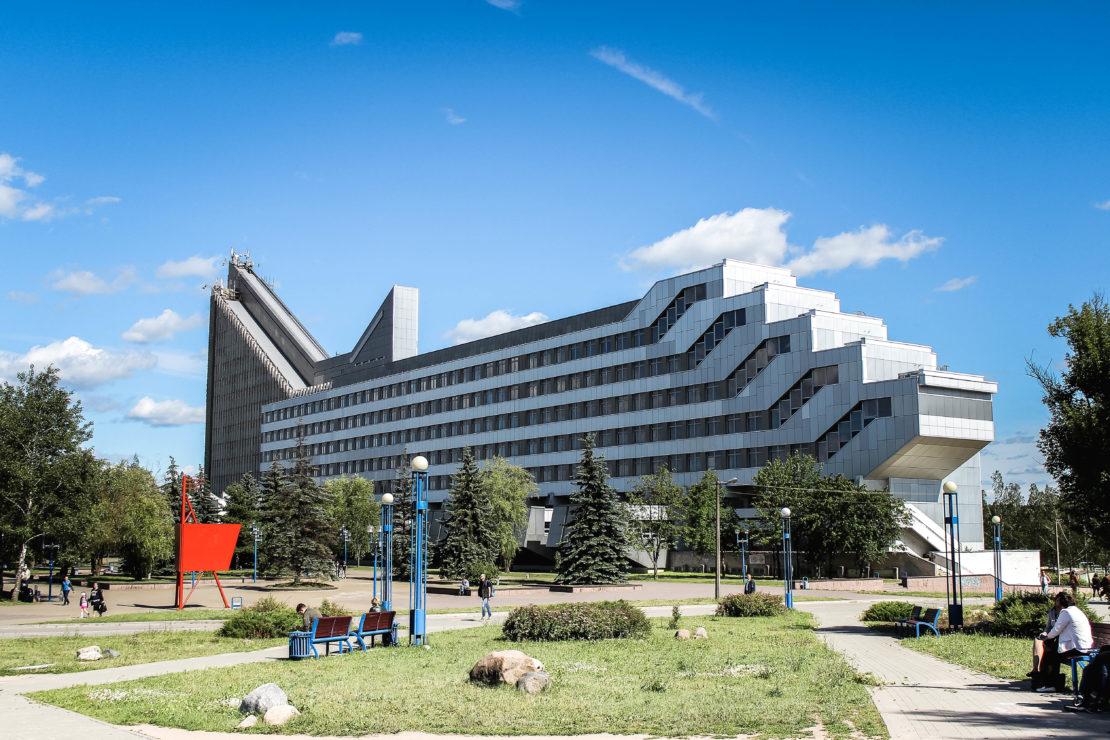
Fast forward to the Republic of Belarus. By the way, a fair part of the city in Minsk is a legacy of Soviet architecture. One of the most interesting projects implemented here by 1983 is the BNTU academic building No. 15. It was built for the Minsk Architectural and Construction Institute, which was never opened. As a result, the building was transferred to the Minsk Polytechnic Institute, which is now reorganized into BNTU.
This amazing architectural object is compared with everything – both with an ocean liner and a passenger plane. Nevertheless, one cannot but agree that it looks more like a living illustration of a space saga: in such a spaceship, it would be possible to organize the relocation of a huge colony of earthlings to another planet. The streamlined shape of the nose of the building, the elegant tail, several levels of space decks – why not? However, the association with aliens does not arise: such a ship could be built, perhaps, only on Earth.

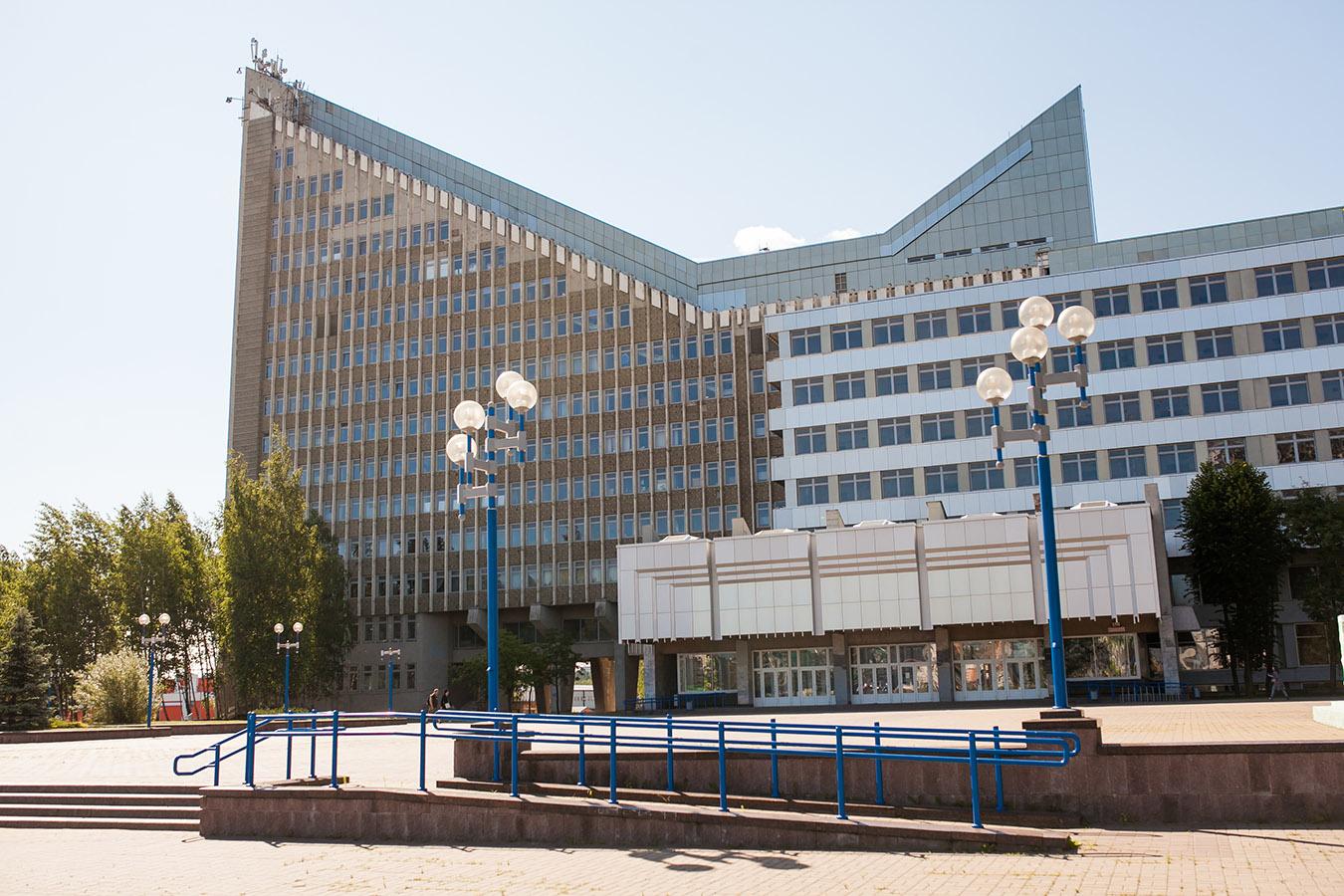
By the way, the architect of the building, Igor Esman, claims that he did not set himself the task of making the building look like a means of transportation, much less a space one. He just needed to elegantly construct a vertical cascade of departments of an ordinary Soviet university and make the project memorable in design. As you can see, he succeeded in full. For many, the 15th BNTU building is still an architectural landmark of the Belarusian capital.
Kunsthaus Museum of Modern Art in Graz (Austria)
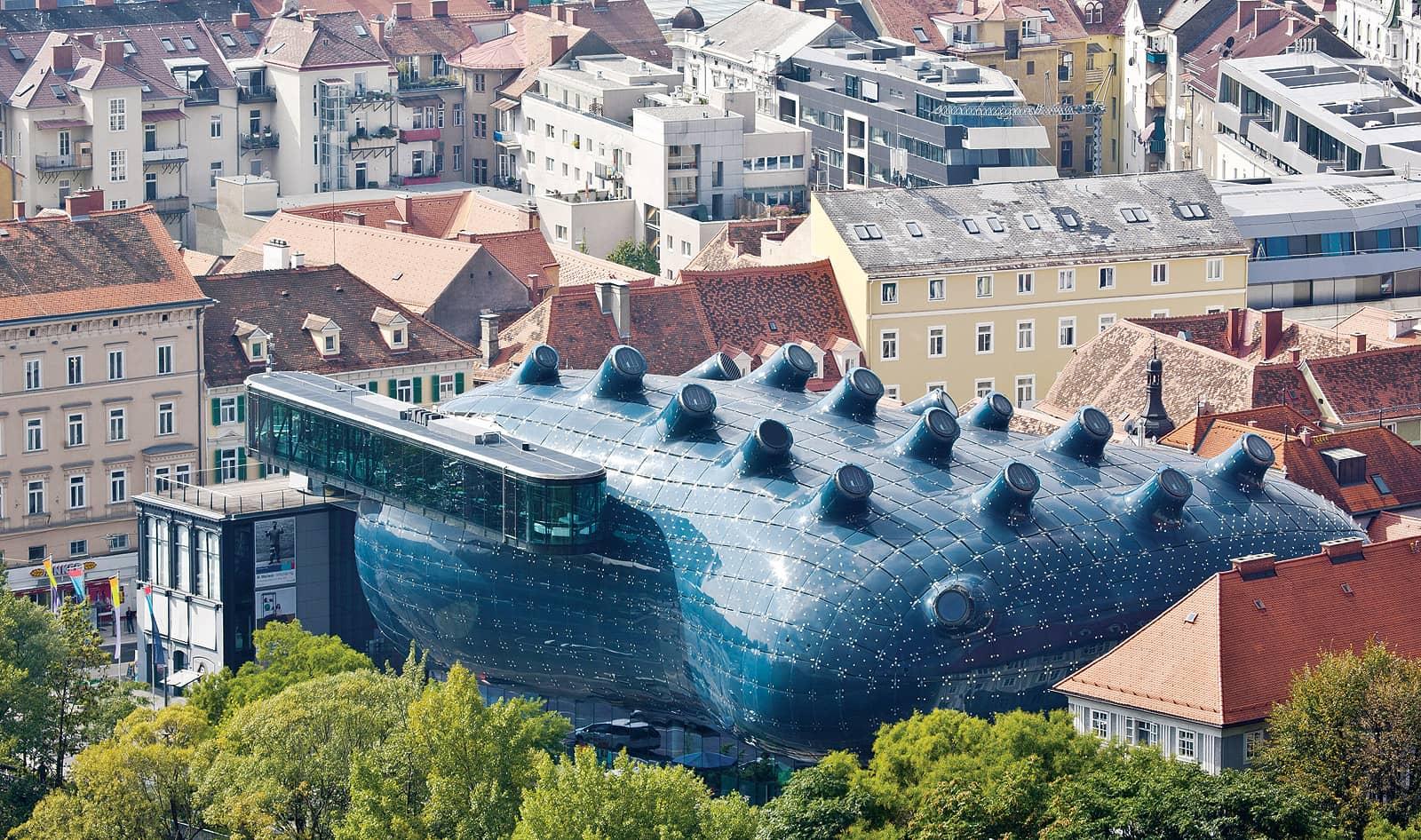
Due to its futuristic appearance and innovation, the museum, built in 2003 in Graz, was nicknamed the "friendly alien". The project of the building belongs to London architects Peter Cook and Colin Fournier, who executed it in an unusual blobitecture style. The building is based on reinforced concrete, and the outer shell is acrylic panels with built-in galvanic elements that allow generating energy.
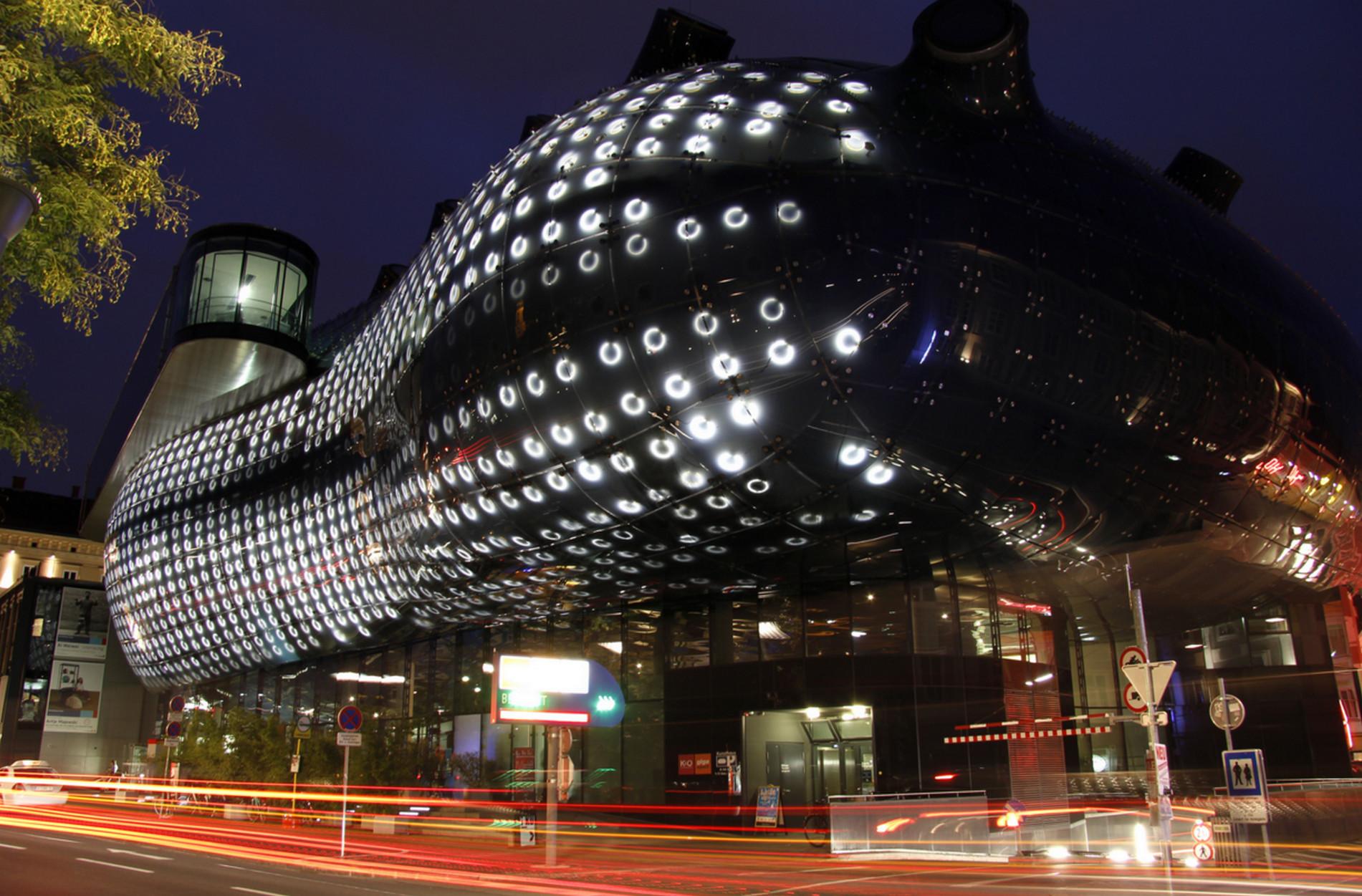
On the facade itself there is a media installation of luminous elements programmed by a computer. During the daytime, an image of the Schlossberg Castle clock tower located on the other side of the river can be seen on the facade, and in the evening the installation is used as a poster announcing upcoming exhibitions and events.
Ilinden Memorial in Krushevo (North Macedonia)

The Ilinden Memorial Complex, or Macedonium, was opened in 1974 in the Yugoslav town of Krushevo. It is dedicated to the uprising of Bulgarians and Macedonians against Turkish rule. Inside the central monument is the tomb of one of the revolutionaries and other memorial attributes - mosaic panels and sculptural images.
Initially, this monument did not carry any alien and space themes, however, the external the view of its central monument raises many questions to the subconscious of architects. Just imagine, there is a huge white ball on the hill above the town, from which several "periscopes" equipped with stained glass windows protrude. The staircase to the entrance resembles a ladder stretched to the entrance compartment of an outlandish space shuttle. The shape of the building evokes stable associations not only with the Czech hedgehog, but also with the Star Wars.
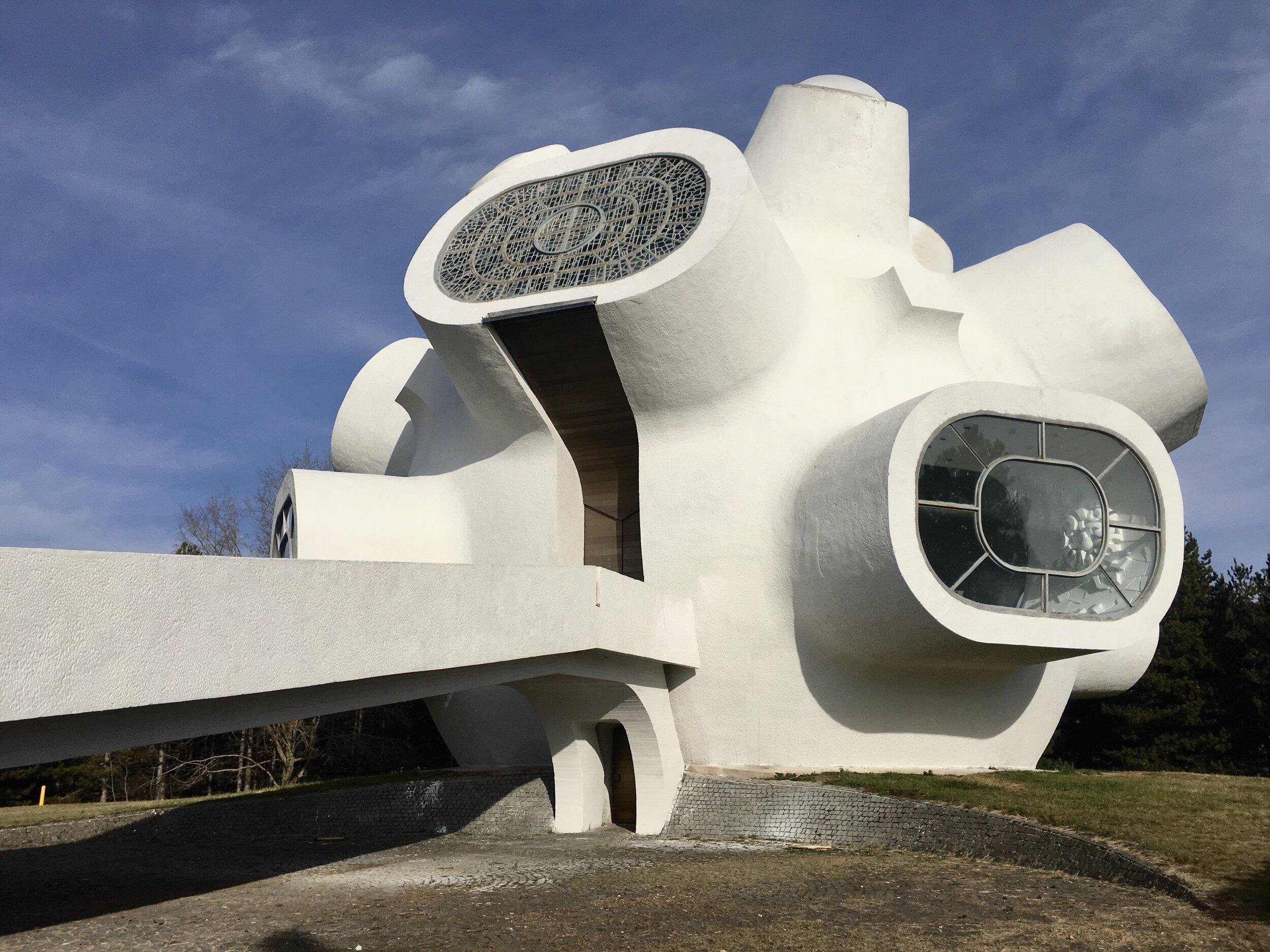
In all information sources, it is dryly reported that the monument is made "in a futuristic style." The futurism here is really off the scale. It seems that the monument will now "close the hatch", smoothly rise above the Macedonian hills and fly away into the black depths of space, periscope windows perkily winking.
Cadet Chapel of the United States Air Force Academy in Colorado (USA)

This original aluminum structure is nothing but a chapel. Its futuristic appearance at the time generated a lot of controversy, which, of course, is not surprising - the building looks more like a radar system or an alien ship, but not a chapel.
And yet it is a religious building. To be more precise, a chapel. Although the interior is as futuristic as the exterior: getting inside, you feel like a member of the crew of a spaceship. But isn't that what is needed in the temple — the feeling that you are getting off the ground? The vaults of the building, made of aluminum, give an almost unearthly shade to the light penetrating here through the stained-glass windows. To get closer to the sky (in a slightly different sense than during training flights), Catholic cadets, Protestants of different confessions, Jews and Buddhists come here. For believers, a special space is provided on two floors of the chapel, equipped according to their beliefs. There are also rooms where there are no religious paraphernalia at all: Muslim cadets pray in them more often than others. There is a separate entrance to each of the rooms so that no one interferes with praying to others.
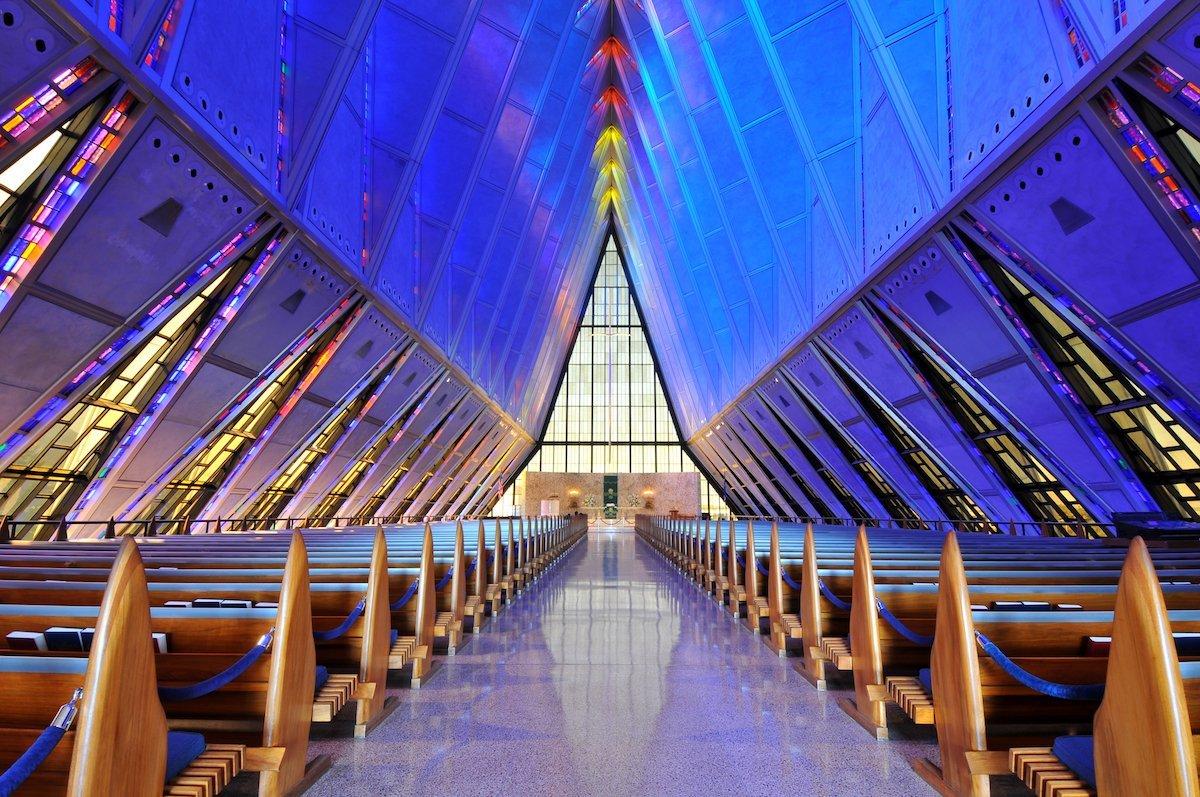
The Art Nouveau building was built in 1962. The author of the chapel project is architect Walter Netch, who worked for the architectural firm Skidmore, Owings & Merill. According to his plan, the structure of the chapel was assembled from one hundred 23-meter pipes, each weighing five tons, and covered with aluminum panels on top. The building is crowned with 17 sharp spires. The main entrance to the chapel is located on the south side — a wide granite staircase leads from it into the building. All the doors and windows in the chapel are made of gilded aluminum. The construction of the Cadet Chapel cost three and a half million dollars. But what is inside - organs, furniture, decorative elements - was donated by various organizations and individuals.
Capital Hill Residence in Moscow (Russia)
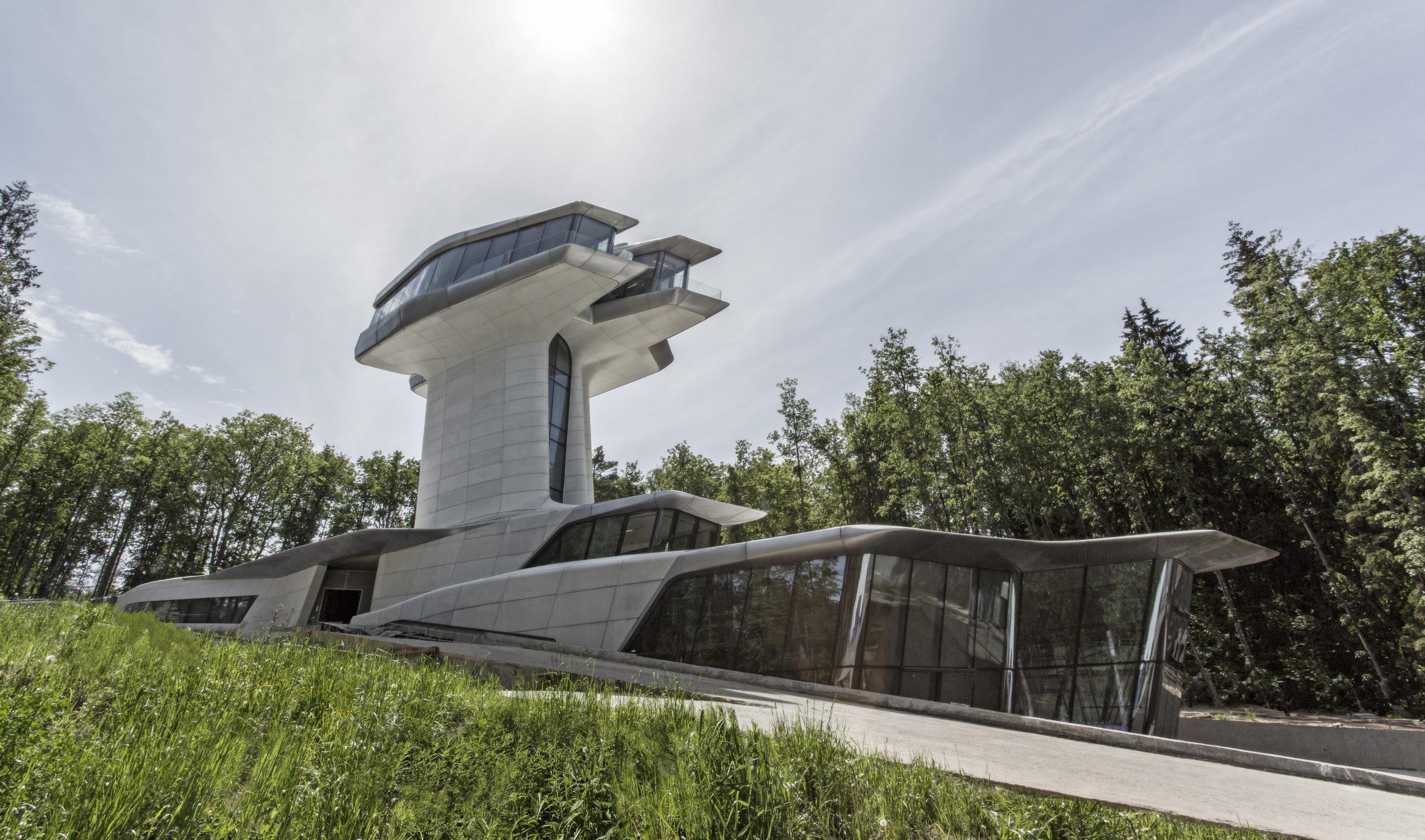
Speaking of space design, it is impossible not to recall one of the greatest architects of our time - Zaha Hadid. Most of her projects are filled with cosmic ideas and futurism. One of her Russian projects is made entirely in the style of a spaceship. We are talking about a country villa in an elite area of Moscow - Capital Hill Residence.
The residence was ordered by Vladislav Doronin. According to rumors, it was intended for his former companion, Naomi Campbell. The building with an area of 2650 m2 is still being completed after the death of the architect. Today it is the main architectural landmark of Barvikha.

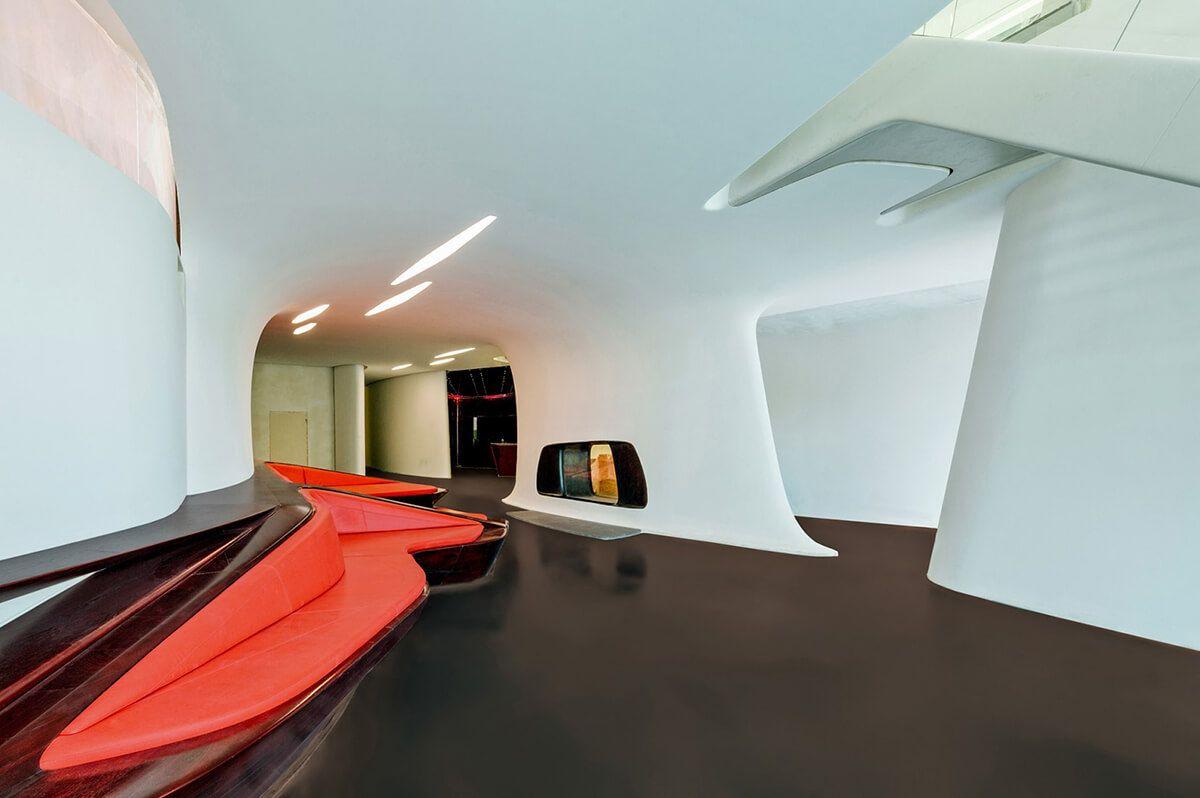
The house is difficult to describe: both from the inside and from the outside it does not look at all like a stationary villa. His flying swift forms do not look stationary. It seems that this is a light and maneuverable space shuttle that is in flight right now. The second floor soars above the main part of the building, which rises 22 m above the peaks of the surrounding forest. Light constructions made of plastic, metal and glass add lightness to the mansion. The interior spaces are decorated in the same space theme - minimalistic, soft and very, very expensive.
Of course, we cannot fail to mention the space buildings of Cyprus.
The Oval in Limassol

The Oval is an ultra-modern business infrastructure facility in Cyprus, built on the coast of Limassol during the joint work of the developer Cybarco and the world-famous architectural firm Atkins. The 16-storey business center looks at least extraordinary and immediately catches the eye.
The design of the building combines smooth, flexible lines that give the structure a streamlined shape, reminiscent of a space station or a ship, rather than an office building. By the way, it was with The Oval in Limassol that the launch of space-scale development projects began.
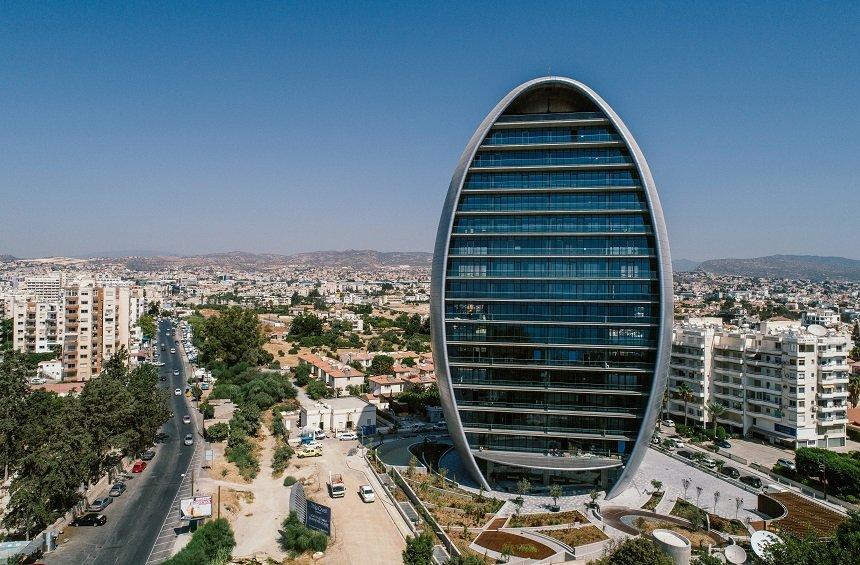

The structure has the shape of a three-dimensional elongated ellipsoid, along which windows are located. In the evening, the object is effectively illuminated by cold "technological" lights. There is an absolute impression that now they will start coming out of it in a friendly way (probably!) customized humanoids.
iHome in Limassol
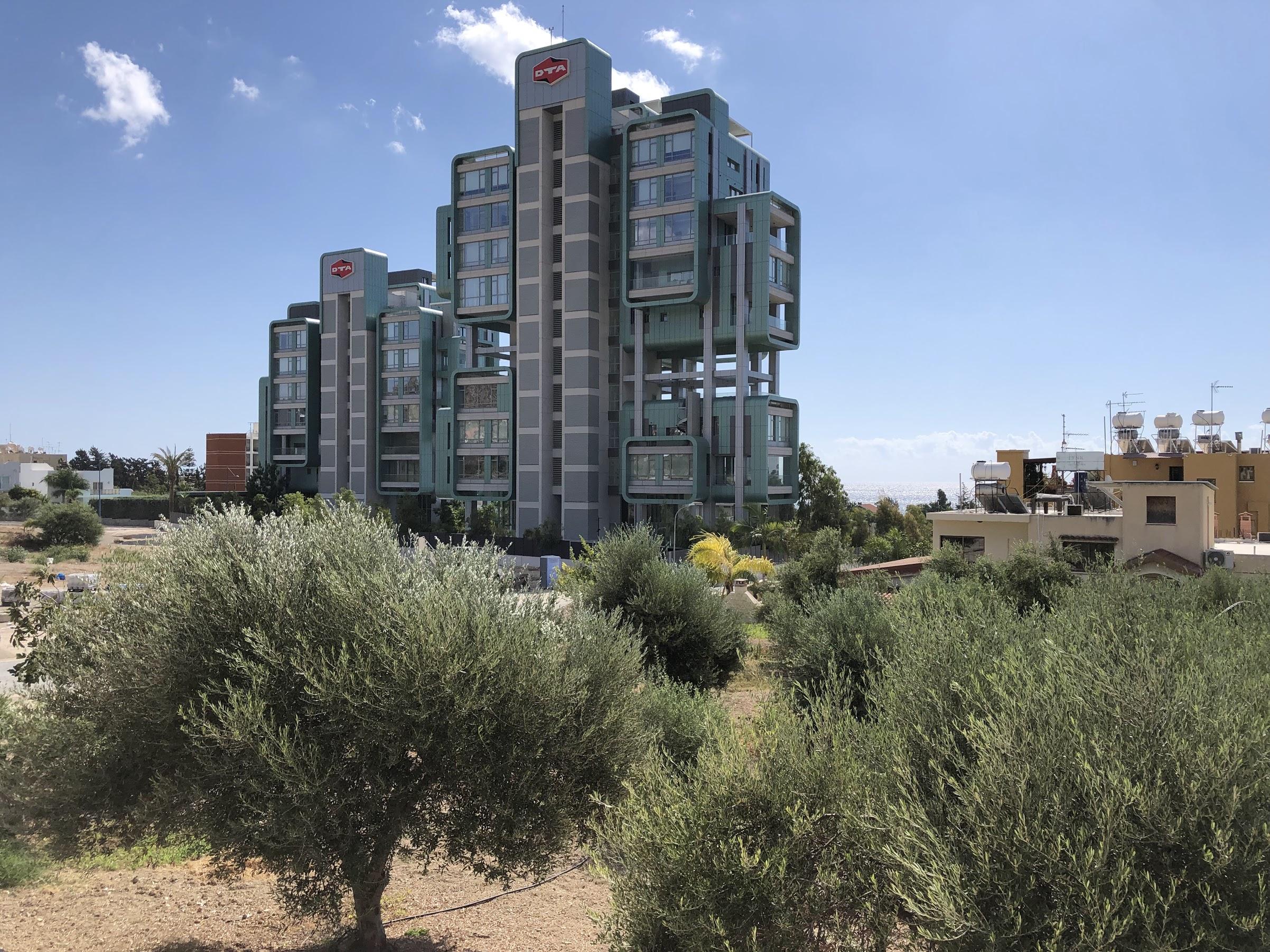
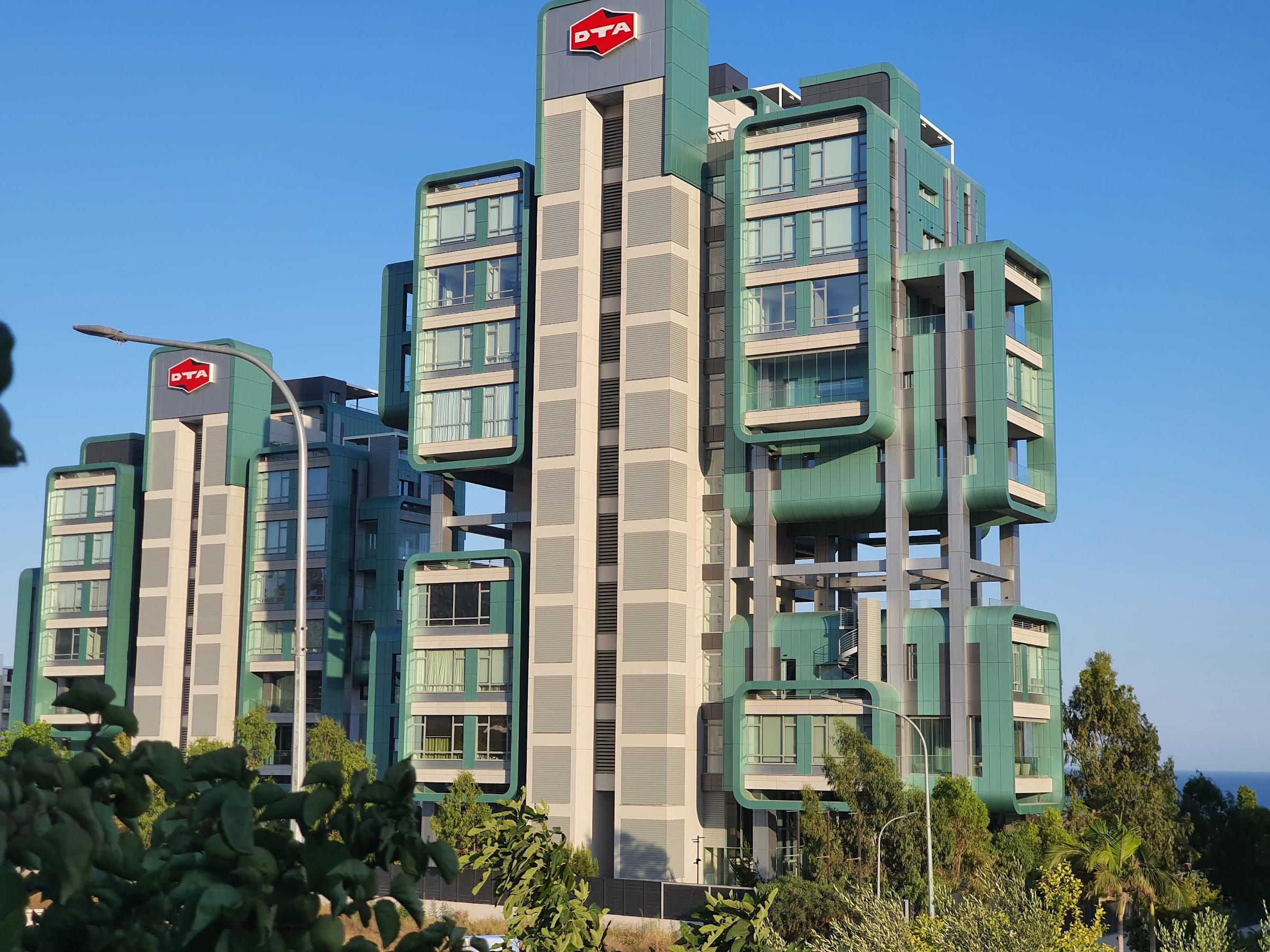
Another unusual project in the business capital of Cyprus is the iHome residential complex in the Mouttagiaka area. The two buildings, 82 m and 70 m high, have a total of only 28 apartments. By Cypriot standards — pure futurism. And the name is quite ambitious, and services - butler, food delivery, babysitters, drivers, smart home system. Unlike many others, this "space" project in Limassol looks unusual, but it is quite harmonious and modern.
The Asteroid in Nicosia
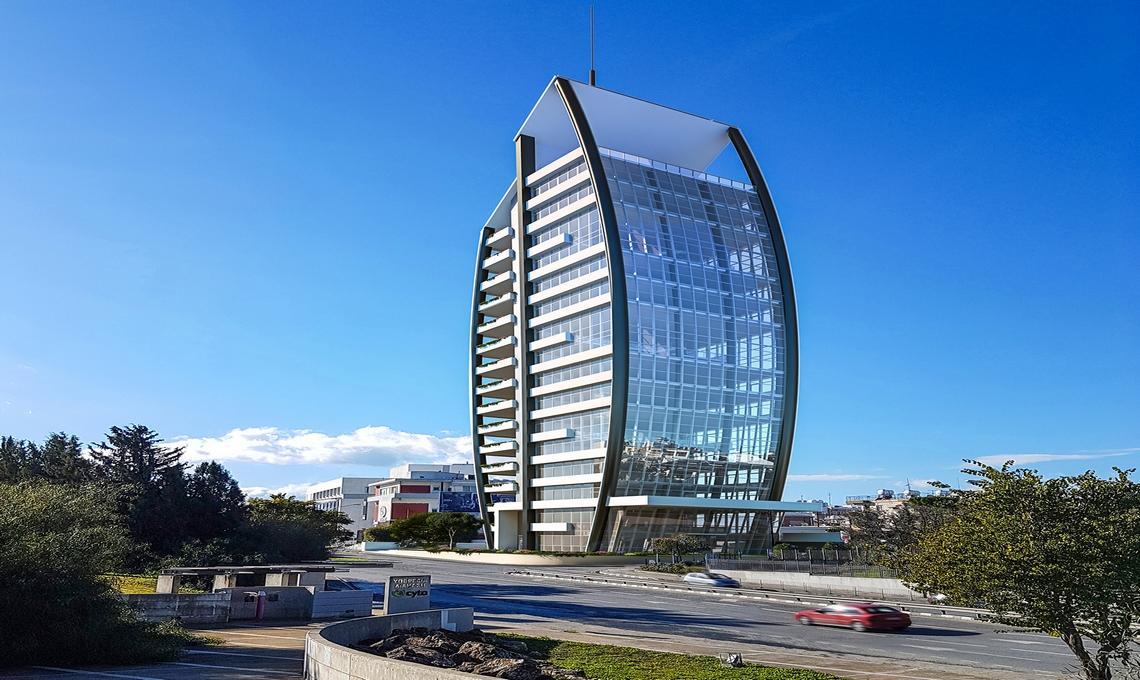
For several years now, a building called The Asteroid. The implementation of the project has not yet been completed, but already now we can safely say that the high-rise will become the most space building in the country.
A 16-storey skyscraper looks very unusual. According to the architects' idea, the futuristic design of the building made of concrete, glass and aluminum will complement the vegetation that will be planted in the courtyard. The construction of the high-rise is carried out by C&A Toumazis Co Ltd. The tower is planned to be commissioned in 2022.
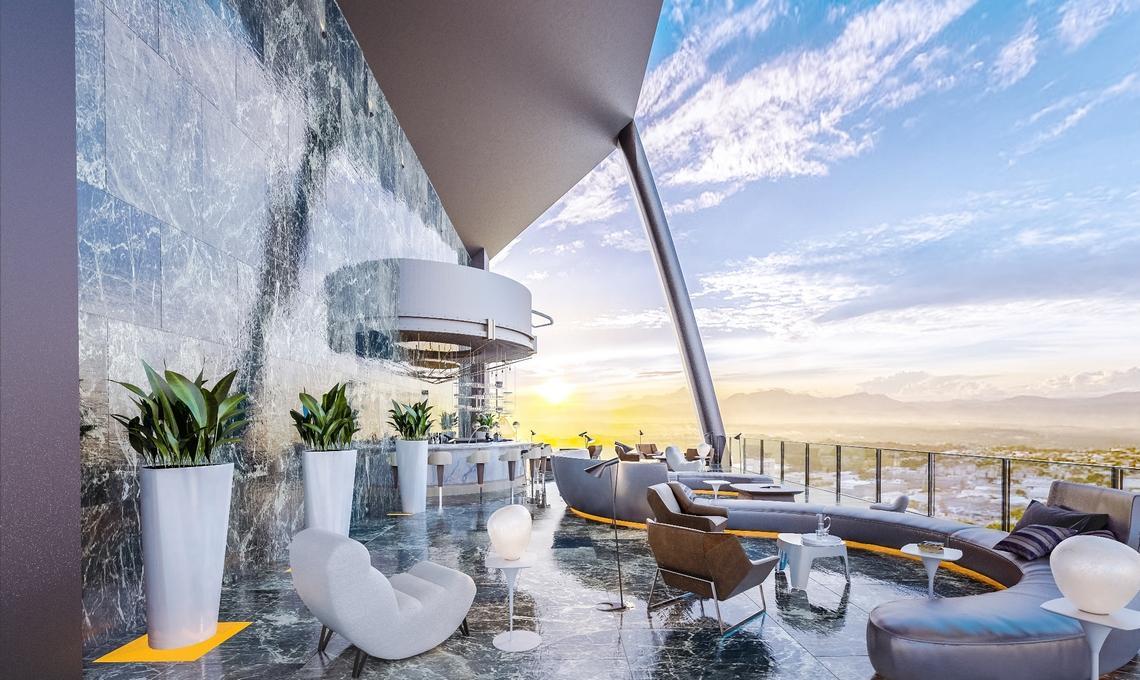
Have you decided to buy a property in Cyprus? Contact DOM! The site offers a huge selection of real estate - residential and commercial. Experienced agency specialists will be happy to help you make the right choice.
Read more:
- TOP 5 Mistakes That Almost Everyone Makes in Interior Design of New Apartment
- The 5 Most Mysterious buildings in the whole entire world
- Top 6 destinations to buy property abroad
- First acquaintance with Larnaca
- Permanent residence permit in Cyprus
- Investment in real estate in Cyprus
- Paphos vs. Limassol. All the pros and cons

